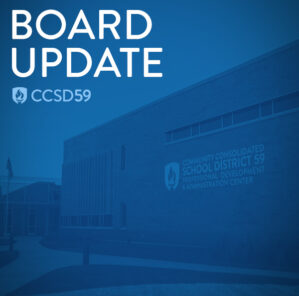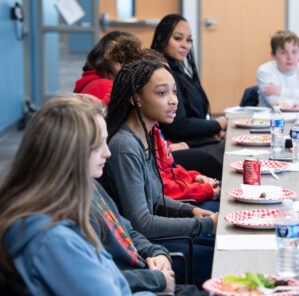Learning Resource Center (LRC)
Learning Resource Center (LRC)
Specials Team (PE, Fine Arts, LRC) Choice Board eLearning Activities Click Here.
Our LRC serves to instill a love of reading, inspire life-long learning, and foster independent library use. Students come to the library (LRC) with their class to check out materials and to practice information literacy skills and digital citizenship. The library is an inviting space where students may acquire knowledge and gain insight.
Our library includes books, magazines, videos, DVDs, audiobooks, and music CDs. There are several student-use computer stations, which also serve library operations, one presentation station, an interactive SMART Board and a teacher station to print photos and posters. Students will come to the LRC every three days where they may to listen to a story, check out a book, celebrate an author as well as follow the LRC Curriculum Framework. See the Framework below.
Promote the Love of Reading through literacy:
- Shows responsibility by caring for resources appropriately
- Chooses books according to interest and reading level with support
- Selects an appropriate book and/or an online resource to share, along with opinion on choice
- Locates fiction and nonfiction books online and within the library
- Contributes and collaborates ideas within a network of learners
- Read/listen widely (e.g., works by a variety of authors and illustrators, a variety of formats, award winning literature, a broad range of cultures, book or author sites)
- Responds to and evaluates all genres in multiple formats (print, digital, videos, songs, poetry, images -visual literacy, etc.)
- Identify genres: biographies, mysteries, realistic fiction, fantasy, poetry, information texts, fiction
- Compare and contrast two or more versions of the same story (e.g., Cinderella stories) by different authors or from different cultures
- Engage in an in-depth study of an author’s and/or illustrator’s body of work
Information Literacy
- Uses the online catalog to find materials
- Identifies importance of using search terms (keywords, title, author, and series)
- With prompting and support, conducts searches using reference tools, educational search engines and databases
- Identify URL and title of web page
- Recognize and define a need for information
- Determine the usefulness of a source
- Use text features (table of contents and index)
- Explores copyright and plagiarism and recognizes the need for citing source
- Use note-taking strategies to gather information
- Integrate information from two sources on the same topic in order to write or speak about the subject knowledgeably with prompting and support
- Present, perform, or share the results of research in a new form (e.g., multimedia tools ) with prompting and support.
- Record citation information
Digital Citizenship
- Familiarize yourself with Basic internet safety
- Cyber-bullying- Students explore how it feels to be cyberbullied, how cyberbullying is similar to or different than in-person bullying, and learn strategies for handling cyberbullying when it arises.
- Review what constitutes inappropriate material
- Identify online predators
- Revealing too much personal information
- Gives credit to owner of visual media, cite sources of materials used
- Protect other people’s personal information when publishing online (images, video, audio, text, etc)
- Identify if a stranger is using Internet information to seem like a friend
- Describe consequences when people do not protect personal information when using social networking tool
- Use technology responsibly to explore and pursue personal interests
- Show others how to use new technologies, and use technology in ways that assist, rather than prevent, others from learning
- Use email to communicate within their school, families and community (3-5)
Specials Team (PE, Fine Arts, LRC) Choice Board eLearning Activities Click Here.
Our LRC serves to instill a love of reading, inspire life-long learning, and foster independent library use. Students come to the library (LRC) with their class to check out materials and to practice information literacy skills and digital citizenship. The library is an inviting space where students may acquire knowledge and gain insight.
Our library includes books, magazines, videos, DVDs, audiobooks, and music CDs. There are several student-use computer stations, which also serve library operations, one presentation station, an interactive SMART Board and a teacher station to print photos and posters. Students will come to the LRC every three days where they may to listen to a story, check out a book, celebrate an author as well as follow the LRC Curriculum Framework. See the Framework below.
Promote the Love of Reading through literacy:
- Shows responsibility by caring for resources appropriately
- Chooses books according to interest and reading level with support
- Selects an appropriate book and/or an online resource to share, along with opinion on choice
- Locates fiction and nonfiction books online and within the library
- Contributes and collaborates ideas within a network of learners
- Read/listen widely (e.g., works by a variety of authors and illustrators, a variety of formats, award winning literature, a broad range of cultures, book or author sites)
- Responds to and evaluates all genres in multiple formats (print, digital, videos, songs, poetry, images -visual literacy, etc.)
- Identify genres: biographies, mysteries, realistic fiction, fantasy, poetry, information texts, fiction
- Compare and contrast two or more versions of the same story (e.g., Cinderella stories) by different authors or from different cultures
- Engage in an in-depth study of an author’s and/or illustrator’s body of work
Information Literacy
- Uses the online catalog to find materials
- Identifies importance of using search terms (keywords, title, author, and series)
- With prompting and support, conducts searches using reference tools, educational search engines and databases
- Identify URL and title of web page
- Recognize and define a need for information
- Determine the usefulness of a source
- Use text features (table of contents and index)
- Explores copyright and plagiarism and recognizes the need for citing source
- Use note-taking strategies to gather information
- Integrate information from two sources on the same topic in order to write or speak about the subject knowledgeably with prompting and support
- Present, perform, or share the results of research in a new form (e.g., multimedia tools ) with prompting and support.
- Record citation information
Digital Citizenship
- Familiarize yourself with Basic internet safety
- Cyber-bullying- Students explore how it feels to be cyberbullied, how cyberbullying is similar to or different than in-person bullying, and learn strategies for handling cyberbullying when it arises.
- Review what constitutes inappropriate material
- Identify online predators
- Revealing too much personal information
- Gives credit to owner of visual media, cite sources of materials used
- Protect other people’s personal information when publishing online (images, video, audio, text, etc)
- Identify if a stranger is using Internet information to seem like a friend
- Describe consequences when people do not protect personal information when using social networking tool
- Use technology responsibly to explore and pursue personal interests
- Show others how to use new technologies, and use technology in ways that assist, rather than prevent, others from learning
- Use email to communicate within their school, families and community (3-5)



